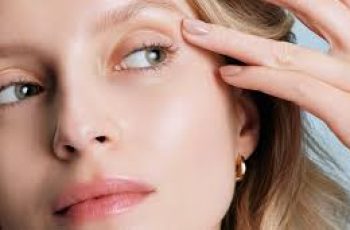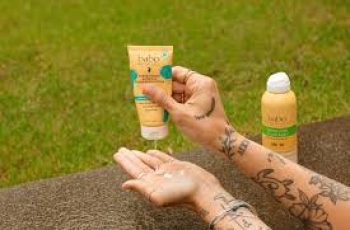
Amla Oil: Uses, Benefits, and Safety Considerations
Introduction
Amla oil, derived from the fruit of the Amla plant (Emblica officinalis), is a well-known natural remedy used primarily in Ayurvedic medicine.
The Amla fruit, also known as Indian gooseberry, has been used for centuries in India and other parts of Asia for its potent health-promoting properties.
While the Amla plant itself offers a range of medicinal uses, Amla oil is best recognized today as a hair care solution, believed to nourish the scalp, reduce hair loss, and promote hair growth.
Although scientific evidence supporting some of these claims is still emerging, early research and traditional use both suggest a range of potential benefits.
This article explores the uses and advantages of Amla oil, especially for hair care, while also considering research on the broader health benefits of the Amla plant.
What Is Amla Oil?
Amla oil is made by soaking dried amla fruits in a carrier oil such as coconut, sesame, or mineral oil.
The fruit’s nutrients and phytochemicals are gradually infused into the oil over time, creating a product rich in antioxidants, vitamin C, and essential fatty acids.
This oil is widely used in beauty routines in South Asia and is now becoming more popular globally due to growing interest in natural and Ayurvedic remedies.
While the oil is most often used topically for hair, other forms of amla, such as powders, capsules, juices, and syrups, are consumed for general health and wellness.
These products also demonstrate health benefits, but they work through different mechanisms compared to the topical application of amla oil.
Key Uses and Benefits of Amla Oil
1. Hair Health and Hair Growth
Amla oil’s primary use is in the treatment and maintenance of healthy hair. It is commonly applied directly to the scalp and hair to improve shine, reduce breakage, and prevent premature graying.
Traditional beliefs suggest that regular use strengthens hair follicles, helps control dandruff, and stimulates new growth.
Hair Loss Reduction
Some small studies and laboratory tests suggest that amla oil may help reduce hair loss and stimulate hair growth:
One study compared herbal blends (including amla oil) to minoxidil, a well-known hair growth treatment.
The results indicated that the herbal formulation was nearly as effective as a 3% minoxidil solution in stimulating hair regrowth in lab conditions—specifically in cultured human hair cells and mice.
Another older study tested amla oil on rabbits and reported comparable effects to a 2% minoxidil solution, again indicating potential benefits for hair regrowth.
In a human study involving oral amla syrup, participants with female androgenetic alopecia saw an increase in the anagen (active growth) phase of their hair cycle, suggesting that amla may support hair growth even when taken orally.
It’s important to note, however, that these studies used different formats (oil vs. syrup) and different subject models (human vs. animal).
While early data is promising, more human clinical trials are necessary to confirm the effectiveness of amla oil for hair growth.
Understanding the Hair Growth Cycle
Hair growth follows four distinct phases:
Anagen: Active growth phase (2–8 years)
Catagen: Transition phase when growth slows (several weeks)
Telogen: Resting phase (2–3 months)
Exogen: Shedding phase, where new hair pushes old hair out
Amla oil may help lengthen the anagen phase and reduce shedding, supporting fuller, thicker hair over time.
2. Antioxidant and Anti-Inflammatory Properties
Amla is naturally rich in vitamin C, polyphenols, and flavonoids—all powerful antioxidants. These compounds help protect cells from oxidative stress and reduce inflammation.
While most research focuses on ingested forms of amla, these compounds may also provide local benefits when applied to the scalp via amla oil.
Oxidative stress can damage hair follicles, and chronic inflammation of the scalp can lead to hair thinning or loss. By addressing these issues, amla oil may create a healthier environment for hair growth.
3. Other Health Benefits of Amla (Oral Use)
While topical amla oil is mainly used for hair care, the amla plant itself has been studied for other therapeutic benefits—particularly when consumed in powder or capsule form.
Blood Sugar Control
Several studies suggest that consuming amla can help regulate blood glucose levels:
In both healthy individuals and those with type 2 diabetes, amla powder has been shown to lower blood sugar levels. This makes it a promising natural supplement for blood sugar management.
Cholesterol and Heart Health
Amla may help lower LDL (bad) cholesterol and triglyceride levels while boosting HDL (good) cholesterol. Improved lipid profiles contribute to better cardiovascular health.
Improved Platelet Function
In people with diabetes, amla extract improved platelet function, which is essential for blood clotting and circulation.
Oxidative Stress and Vascular Health
One study had participants take 125 mg of amla powder four times daily (500 mg total), which improved vascular function and reduced oxidative damage to cells—a significant benefit for heart and metabolic health.
While these benefits are not linked directly to amla oil, they underscore the broad medicinal potential of the Amla plant.
How To Use Amla Oil
Amla oil is most effective when applied topically to the scalp and hair. Below are common methods of use:
Application Techniques
Scalp Massage: Apply a small amount of amla oil to your fingertips and gently massage it into your scalp. Leave it on for 30 minutes or overnight for deeper conditioning before washing it out.
Pre-shampoo Treatment: Use amla oil before washing your hair to protect it from drying shampoos.
Leave-in Conditioner: A few drops of oil applied to damp hair can help reduce frizz and add shine.
Mixed with Other Oils: Some users mix amla oil with coconut or castor oil for additional benefits.
Safety and Side Effects
Although amla oil is generally considered safe for external use, a few precautions should be taken:
Patch Testing
Before using a new product, do a patch test. Apply a small amount to a patch of skin (such as the inside of your elbow) and wait 24–48 hours to check for redness, irritation, or allergic reaction.
Oral Side Effects (For Amla Powder/Capsules)
When taken orally, amla products are usually safe but may cause mild gastrointestinal side effects in some individuals, such as:
Diarrhea
Constipation
Loose stools
There is no evidence of major adverse effects when consumed in moderate amounts (e.g., up to 500 mg per day of amla powder).
Special Populations
Pregnant or Breastfeeding Individuals: There is no clear evidence about the safety of amla oil during pregnancy or lactation. It is best to consult a healthcare provider before use.
Children: Talk to a pediatrician before using amla oil on a child’s scalp or skin.
Avoid Ingesting Cosmetic Oils: Never ingest amla oil sold for hair or beauty use, as it may contain additives not safe for consumption.
Choosing the Right Amla Oil
Because cosmetic products like amla oil are not strictly regulated by the FDA, it’s important to choose products carefully. Here are some tips:
Check the Ingredient List: Look for natural oils and avoid products with excessive fragrances, artificial colors, or preservatives.
Choose Reputable Brands: Buy from well-known, trusted companies with positive customer reviews.
Perform a Patch Test: Always test a new product on a small skin area first.
Understand the Concentration: Research-based formulas that showed hair growth benefits contained up to 7.5% of each herbal ingredient, including amla oil.
Consult a Doctor When Needed: If you’re pregnant, nursing, or have health concerns, get medical advice before starting a new product.
Conclusion
Amla oil is a time-tested remedy with strong roots in Ayurvedic tradition. Its primary use is in hair care, where it may help reduce hair fall, nourish the scalp, and stimulate growth.
Though more clinical studies are needed to fully confirm these effects in humans, early research and traditional use suggest a positive impact on hair health.
Beyond topical use, oral forms of the Amla plant offer promising health benefits for people managing blood sugar, heart disease risk, and oxidative stress.
Whether you’re looking for a natural hair solution or exploring Ayurvedic supplements, Amla stands out as a multi-functional botanical worth considering.
As with any supplement or topical remedy, always use Amla oil responsibly, choose high-quality products, and consult a healthcare provider when in doubt.


